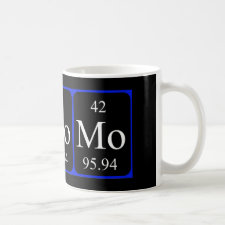
Authors: Prasad BB, Rai G
Article Title: Molecular structure, vibrational spectra and quantum chemical MP2/DFT studies toward the rational design of hydroxyurea imprinted polymer.
Publication date: 2013
Journal: Spectrochimica Acta Part A-Molecular and Biomolecular Spctroscopy
Volume: 105
Page numbers: 400-411.
DOI: 10.1016/j.saa.2012.12.001
Alternative URL: http://www.sciencedirect.com/science/article/pii/S138614251201219X
Abstract: In this study, both experimental and theoretical vibrational spectra of template (hydroxyurea, HU), monomer (N-(4,6-bisacryloyl amino-[1,3,5] triazine-2-yl-)-acryl amide, TAT), and HU-TAT complexes were compared and these were respectively found to be in good agreement. Binding energies of HU, when complexed with different monomers, were computed using second order Moller Plesset theory (MP2) at 6-311++G(d,p) level both in the gas as well as solution phases. HU is an antineoplastic agent extensively being used in the treatment of polycythaemia Vera and thrombocythemia. It is also used to reduce the frequency of painful attacks in sickle cell anemia. It has antiretroviral property in disease like AIDS. All spectral characterizations were made using Density Functional Theory (DFT) at B3LYP employing 6-31+g(2d, 2p) basis set. The theoretical values for 13C and 1H NMR chemical shifts were found to be in accordance with the corresponding experimental values. Of all different monomers studied for the synthesis of molecularly imprinted polymer (MIP) systems, the monomer TAT (2 mol) was typically found to have a best binding score requisite for complexation with HU (1 mol) at the ground state
Template and target information: hydroxyurea, HU
Author keywords: FT-Raman, FT-IR, 13C NMR, 1H NMR, Ab initio approach, molecularly imprinted polymer



Join the Society for Molecular Imprinting

New items RSS feed
Sign-up for e-mail updates:
Choose between receiving an occasional newsletter or more frequent e-mail alerts.
Click here to go to the sign-up page.
Is your name elemental or peptidic? Enter your name and find out by clicking either of the buttons below!
Other products you may like:
 MIPdatabase
MIPdatabase









